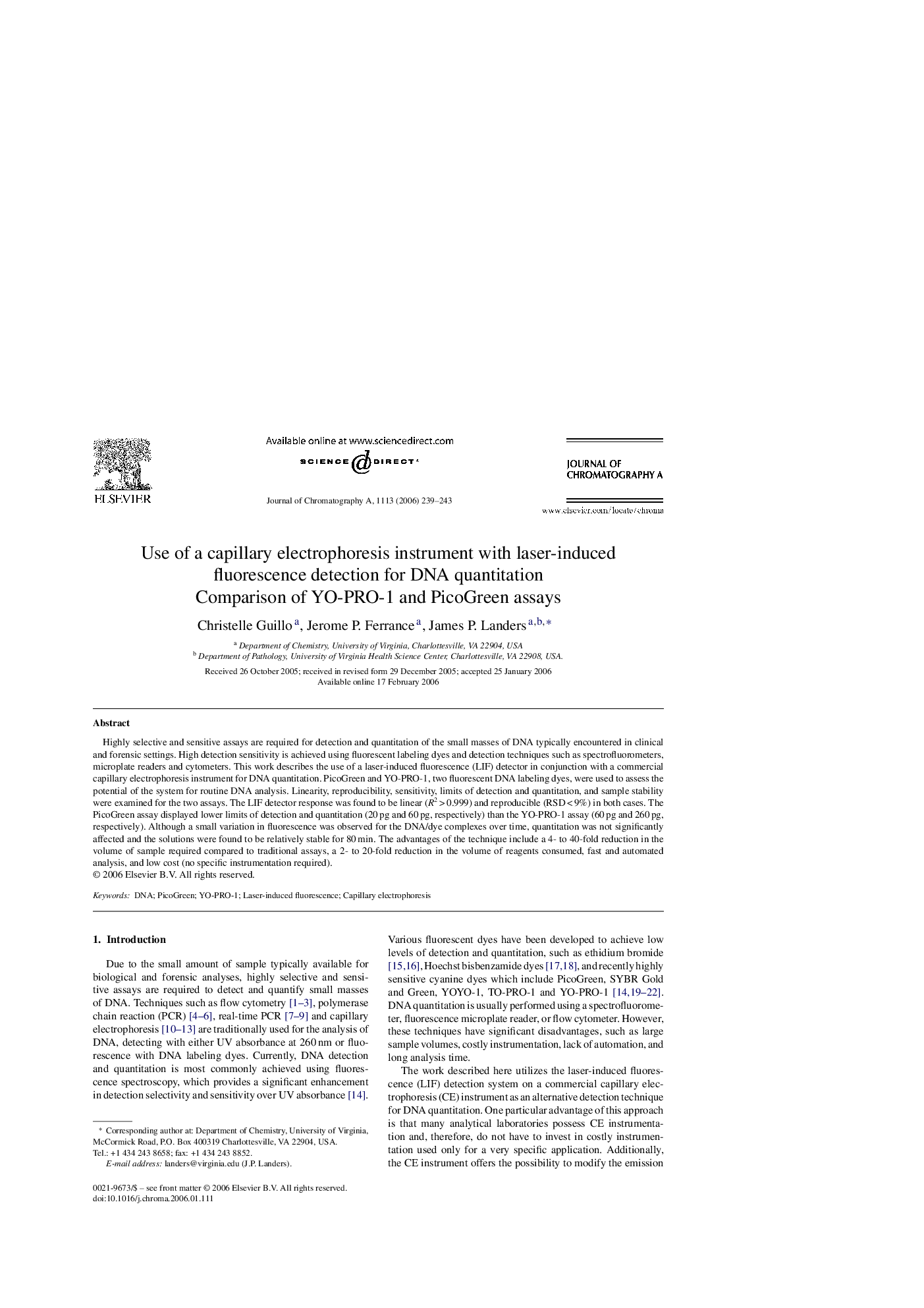| Article ID | Journal | Published Year | Pages | File Type |
|---|---|---|---|---|
| 1211571 | Journal of Chromatography A | 2006 | 5 Pages |
Abstract
Highly selective and sensitive assays are required for detection and quantitation of the small masses of DNA typically encountered in clinical and forensic settings. High detection sensitivity is achieved using fluorescent labeling dyes and detection techniques such as spectrofluorometers, microplate readers and cytometers. This work describes the use of a laser-induced fluorescence (LIF) detector in conjunction with a commercial capillary electrophoresis instrument for DNA quantitation. PicoGreen and YO-PRO-1, two fluorescent DNA labeling dyes, were used to assess the potential of the system for routine DNA analysis. Linearity, reproducibility, sensitivity, limits of detection and quantitation, and sample stability were examined for the two assays. The LIF detector response was found to be linear (R2Â >Â 0.999) and reproducible (RSDÂ <Â 9%) in both cases. The PicoGreen assay displayed lower limits of detection and quantitation (20Â pg and 60Â pg, respectively) than the YO-PRO-1 assay (60Â pg and 260Â pg, respectively). Although a small variation in fluorescence was observed for the DNA/dye complexes over time, quantitation was not significantly affected and the solutions were found to be relatively stable for 80Â min. The advantages of the technique include a 4- to 40-fold reduction in the volume of sample required compared to traditional assays, a 2- to 20-fold reduction in the volume of reagents consumed, fast and automated analysis, and low cost (no specific instrumentation required).
Related Topics
Physical Sciences and Engineering
Chemistry
Analytical Chemistry
Authors
Christelle Guillo, Jerome P. Ferrance, James P. Landers,
